Hair goes through different stages as it grows. Understanding the various phases of the hair growth cycle can provide valuable insights into the hair growth process. There are 4 main phases of the hair growth cycle: anagen, catagen, telogen, and exogen.
The anagen phase is when hair is actively growing. This phase can last 2-6 years. The catagen phase is a short transition phase that lasts 2-3 weeks. The hair stops growing during this phase. The telogen phase is when hair rests and sheds. This phase lasts 2-3 months. Finally, the exogen phase is when the hair falls out, and new hair starts the cycle again. The cycle then repeats itself.
In this blog, we will explore in detail these four distinct phases that make up the hair growth cycle and learn about the unique characteristics of each stage. Knowing what phase your hair is in can help you use the right hair products and treatments.
4 Stages of the Hair Growth Cycle
The lifecycle of hair refers to the natural process through which hair grows, rests, and eventually sheds. Your head is made of thousands of strands of hair, and each strand is in a different stage when it comes to the 2 to 5-year lifespan. Hair typically grows and then finally dies over different phases, and stress, hygiene, daily styling, and nutrition all contribute to the amount of hair that you lose daily. Let's explore the four main hair growth phases:
1. Anagen Phase (Growth Phase)
The anagen phase is the first and active growth phase of hair follicles. This stage of the hair growth cycle is the longest phase lasting about 2-6 years. The anagen phase is when the hair strands are still growing, and 90% of the hairs on your head are in this phase. During the "anagen" phase, the strands grow around 1 centimeter every month.
If something is stopping or interfering with hair growth, it is known as "anagen effluvium." Anagen effluvium is something that you would naturally assume when thinking of "hair loss."
2. Catagen Phase (Transition Phase)
Following the anagen phase, the hair follicles enter the second phase of the hair growth cycle, called the catagen phase, also known as the transition phase. Only around 1 to 2% of the hairs on your head will be in this phase. This is a stage that lasts between 2 to 3 weeks, where the hair stops growing.
During the catagen phase, hair growth ceases, and the hair follicle transitions. The lower part of the follicle gets smaller, and the hair shaft separates from the blood supply. The hair becomes a fully formed hair that doesn't grow anymore.
3. Telogen Phase (Resting Phase)
The third phase is called the "telogen phase", or resting phase. The resting phase is when the hair follicles take a break. The hairs in this phase are also known as "club hairs." In this hair growth phase, the strands are at rest while preparing to fall out (detach from the scalp). Only around 8 to 9% of the strands will be in this stage at a time. It usually lasts for a few months.
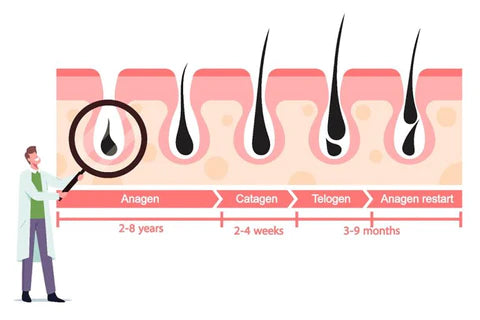
Telogen effluvium occurs when over 10% of the hair on your head is in this final stage. Telogen effluvium is only temporary, but you will notice more hair loss while your hair is in this phase. Surgery, stress, or even experiencing a high fever over a day or two can result in telogen effluvium. Your hair will most likely normalize within 6 months.
4. Exogen Phase (Shedding Phase)
The exogen phase is the last stage of the hair growth cycle. During this stage, old hairs naturally shed to make room for new hair to grow. It's a normal and necessary part of the hair growth process. Shedding occurs as the hair follicles release the old hair shaft, allowing it to fall out. This allows fresh hair to emerge from the follicles and continue the growth cycle. While it may be concerning to see hair shedding, especially in larger amounts, it's important to remember that it's a natural occurrence and part of the hair's renewal process.
What Factors Affect the Length of the Hair Growth Cycle?
The length of the hair growth cycle can be influenced by several factors. One of the primary factors is genetics. Each person is born with a predetermined hair growth cycle length, which can vary between individuals. Age is another factor that can impact the length of the cycle. As we get older, the hair growth cycle may become shorter, resulting in slower hair growth.
Overall, health and lifestyle choices also play a role. Poor nutrition, stress, and certain medical conditions can disrupt the hair growth cycle and lead to shorter phases. On the other hand, a healthy lifestyle, balanced diet, and proper hair care can support optimal hair growth and contribute to a longer hair growth cycle.
External factors like environmental conditions, exposure to chemicals, and heat styling can also affect the length of the hair growth cycle. Excessive use of heat-styling tools, harsh chemical treatments, and exposure to environmental pollutants can damage the hair follicles and disrupt the normal cycle.
Why Is My Hair Falling Out?
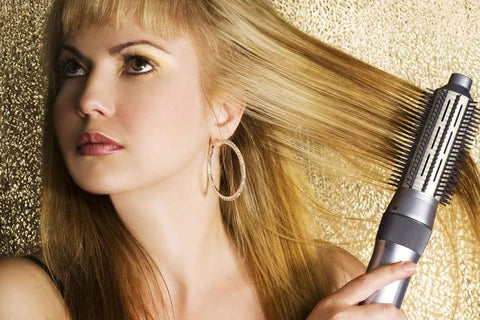
Moderate hair loss every day is normal. But an increase in the hair that is falling out may have to do with a health condition or stress. Other reasons why hair loss occurs include:
- Nutritional deficiencies
- Alopecia
- Lupus
- Female Pattern Hair Loss
- Thyroid Conditions
- Excessive heat styling, brushing, bleaching, and washing can also contribute to how many hairs fall out each day. Once the hair follicles are split or stretched, which is caused by cosmetic hair treatments, the overall structure of these hair follicles becomes compromised.
How to Support Hair Health During Hair Growth Stages
There are different ways you can help to support hair health during hair growth phrases:
Wash your hair regularly with a mild and gentle shampoo
To keep your hair healthy during its growth cycle, make sure to wash it often using a gentle shampoo. Avoid shampoo with harmful ingredients that cause hair loss. Washing your hair regularly helps to prevent hair loss when you keep your scalp and hair clean. This also lowers the risks of infection or dandruff which could result in hair loss or breakage. At the same time, when your hair is clean it promotes a more voluminous look.

Vitamins
Taking vitamins is an effective way to support the hair growth cycle. Vitamins are great for your well-being and health, as well as for your scalp and hair. Vitamin A, for example, encourages sebum production for your scalp, while Vitamin E promotes blood circulation to your scalp, which helps the hair follicles to remain productive. Vitamin B also helps to maintain a vibrant and healthy color.
Include more protein in your diet
Protein is a building block for hair, and consuming enough of it can promote hair growth and strength. Eating lean meats, soy, fish, or any other source of protein promotes healthy hair, which helps to curb or slow down hair loss. So remember, adding more protein to your meals can support the health of your hair during the hair growth cycle.
Massage your scalp with essential oils
Massaging your scalp with essential oils can help the hair follicles stay active. Some of the best oils to use include sesame, almond, or lavender.
Don't brush your hair when it is wet
Your hair is in its "weakest state" when it is wet. Use a wide-tooth comb if you must brush or comb your hair when it is wet. You should also not brush your hair too often as this can damage or injure the hair follicles which can increase loss. Rather, undo tangles with your fingers instead of a brush or comb.
Ginger, onion, or garlic juice
Rub the juice of one of these ingredients into your scalp. Leave the mixture on your hair overnight. Wash your hair when you wake up. Repeat the process 2 to 3 times weekly, and you will start to notice results.
Stay hydrated
Your hair shafts are made up of 1/4 water, which is why you should be drinking at least 4 to 8 glasses of water every day to promote healthy hair growth.

Use green tea in your hair
Research has indicated that if you rub green tea into your hair and scalp it can help to slow down hair loss. Brew 2 bags of tea and allow to cool before you rub the solution into your hair. Thoroughly rinse your hair after 1 hour. To start noticing results apply the green tea mixture to your hair every second day over a total of ten days.
How Can I Tell If I Am Losing Too Much Hair?
The "pull test" is one of the easiest ways to determine whether you are losing too much hair. Take a small patch of dry, clean hair, running your fingers through it until you are just about to reach the end of the strands. Once you are close to the end, tug gently.
If more than 3 hairs detach from your scalp, you might be experiencing anagen or telogen effluvium. As a guide, you should not lose more than 10 hairs for every 100 strands that you tug on. If you are losing more, it is advisable to consult with a doctor to find the cause.
When Should I See a Doctor?
Schedule an appointment with a doctor if you are worried about the amount of hair that you lose every day. If you have started to notice bald or patchy spots across your scalp, the hair on the top of your scalp is gradually thinning out.
If you have started to lose hair all over your body, it could be an indication of underlying health conditions. Your doctor should be able to determine whether the hair that you are losing is normal or whether there is an underlying issue.

How Does Hair Loss Affect Men Vs Women?
Male Pattern Baldness
Also known as androgenetic alopecia, male pattern baldness is a very common hair loss type in men. The U.S. NLM (National Library of Medicine), states that over 50% of men that reach the age of 50 and older will be impacted by this condition to a certain extent.
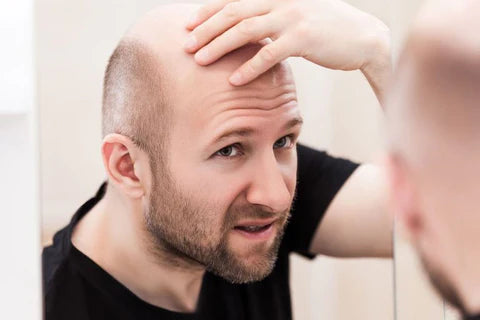
What Causes Androgenetic Alopecia?
Genetics is one of the main causes of male pattern baldness, or when your family history is linked to baldness. Studies have discovered that Androgenetic alopecia is linked to androgens which are male sex hormones. The androgens perform various functions which include the regulation of hair growth.
Every hair strand is going through the growth cycle. With Androgenetic alopecia, these growth cycles start weakening, which causes the hair follicles to shrink. This results in producing finer and shorter hair strands. Eventually, hair growth cycles for each strand will end, where the new hair will no longer grow to replace it.
Hair Loss In Men
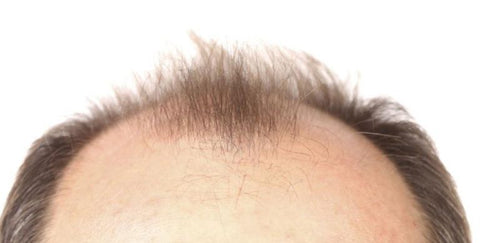
Male pattern baldness that is inherited typically will not have any side effects. However, in some cases, baldness can be linked to a more serious cause, including certain types of cancers, anabolic steroids, thyroid conditions, and medications.
It is important to schedule an appointment with a doctor if you start losing hair after starting a course of a new medication or when you are experiencing any other type of health complaint.
Doctors typically use patterns of how you are losing hair to diagnose androgenetic alopecia. They might perform an exam and look into your medical history to eliminate certain conditions as a cause. This can include nutritional disorders or if you have ever experienced a fungal condition on your scalp.
A health condition could be what is causing hair loss or baldness when either pain, redness, a rash, hair breakage, patches of hair loss, or when the scalp starts peeling accompanies your hair loss. Blood tests or skin biopsies may become necessary to detect a disorder responsible for your hair loss.
Who Is Most at Risk?
Male pattern baldness or Androgenetic alopecia can start as early as the teenage years but occurs more commonly in adults where it starts to increase with age. Genetics also plays a significant role.
Men that have a close relative such as a father or grandfather that has Androgenetic alopecia are usually at higher risks. This is even more prevalent when the relative was on your maternal side.
Hair Loss In Women
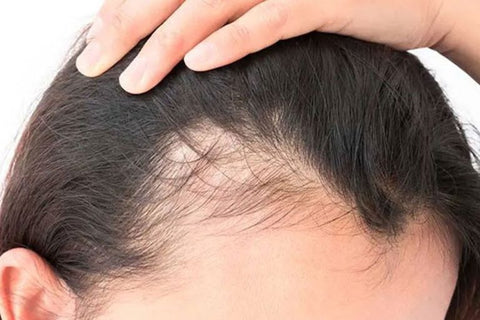
Around a third of adult women will experience alopecia (hair loss) at some stage in their lifetime. When it comes to postmenopausal women, up to two-thirds can experience bald spots or hair thinning.
Losing hair as a woman has a more significant impact when compared to hair loss in men since it is not as "socially acceptable" for women. Alopecia often affects the emotional security and well-being of many women.
The primary hair loss type in women is very similar when compared to hair loss in men. It is called androgenetic alopecia, or female pattern hair loss. For men, the loss of hair usually starts just above the temple, where the hairline recedes to form the characteristic "M" shape.
The hair over the top part of the head will also start thinning out, which often progresses to baldness. In a woman, androgenetic alopecia starts with a gradual thinning that occurs at the parting line.
This is followed by an increase in hair loss that radiates from the crown. In women, the hairline will rarely recede, and it is not common for a woman to go completely bald.
There are several potential reasons why women experience hair loss, including medications, emotional and physical stress, or a medical condition. If you start noticing hair loss that is unusual, it is advisable to see a dermatologist or health practitioner so that they can diagnose the exact cause to provide you with the appropriate treatment.
You can also ask your doctor to provide you with a referral if you would like to attend support groups or see a therapist if you need to address an emotional difficulty. Hair loss, especially in women, can be extremely frustrating and embarrassing, but over the last few years, there are more resources than ever to cope with these problems.
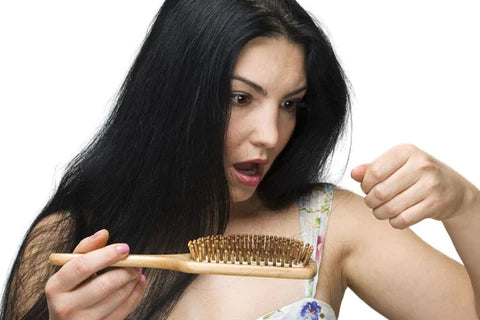
Stay Away from Things That Are Bad for Your Hair
If you want healthy hair, it is important to know what you should be doing and what you should be avoiding. Never rub your hair with a towel. Rather allow your hair to dry naturally. Also, minimize the use of harsh chemicals like bleach and relaxers, as they can weaken and break your hair. Try to limit tight hairstyles that pull on your hair, as they can cause breakage. By avoiding these damaging factors, you can help maintain the health of your hair during its growth cycle.
Limit your intake of alcohol
If your hair is already falling out, lower your intake of alcoholic beverages since alcohol slows down hair growth. Eliminate or decrease your consumption of alcohol if you are struggling with hair loss.

Stop smoking
Smoking cigarettes lowers the blood flow to your scalp, which can also lead to a decrease in your hair growth.
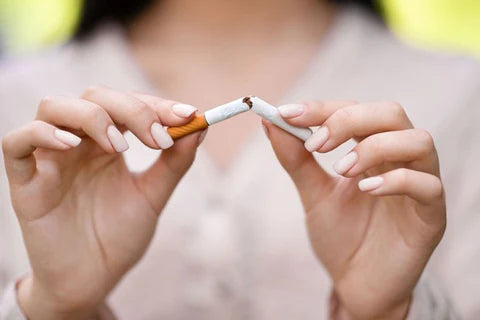
De-stress
Research from previous years has discovered medical evidence that links hair loss with stress. One of the best ways to de-stress is by practicing meditation. Alternative therapies such as yoga or meditation reduce stress while restoring hormonal balance.

Physical activity
Physical activity is very important to reduce stress levels, balance your hormonal levels, and curb hair fall.

Try to keep your head sweat-free
Men that have oily hair often experience dandruff over the summer months caused by sweating. This increases the chances of hair loss. Use a shampoo that contains Neem and Aloe Vera to prevent dandruff and to keep your head feeling cooler.
Avoid constant drying and heating
Try not to constantly subject your hair to drying and heating procedures. Heat will weaken the proteins in the hair shafts, while constant drying can result in fragility and weakness which also causes hair fall.
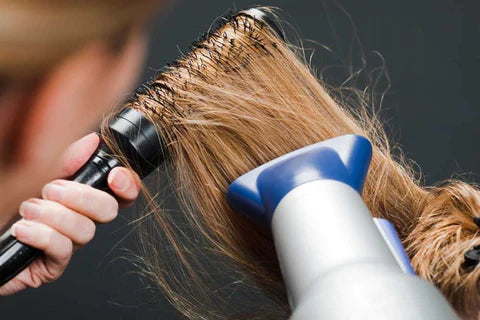
Promote New Hair Growth and Prevent Hair Loss
If you are struggling with treating or preventing hair loss, or you are interested in promoting a new healthy hair cycle, Theradome may be just the right solution for you. Theradome laser helmet for hair loss uses an at-home advanced laser restoration technology that has claimed to successfully change women and men's lives across the globe.
Am I A Candidate for Theradome?
The best candidates for Laser Phototherapy are people that suffer from receding hairlines, hair loss, or need something to strengthen the hair. Theradome is a technology designed to stop and treat earlier hair loss stages, I-1 to II-2 for women, or IIA to V for men.
It is also ideal for those that lead busy lifestyles who may not have time to visit clinics once or twice a week or those looking for a more affordable solution.
How Many Treatments Are Needed to Notice Results and How Long Are the Sessions?
We suggest that you use Theradome Pro for 20 minutes at a time, twice weekly, or the Theradome EVO, 4 times a week, for 20 minutes a session. Theradome often produces satisfactory results in 4 to 6 weeks from the first treatment.
In 4 to 12 weeks, your hair fall will start slowing down, and in 8 to 24 weeks, you should notice thicker hair. In 24 to 36 weeks, you should start noticing new hair growth.
Even after achieving a desirable result, we suggest that you carry on following the regimen. Laser therapy for hair is very similar to physical exercise; you should include it into your existing lifestyle to carry on enjoying these benefits.
Say yes to the hair you've been dreaming of! Order your Theradome laser helmet now and experience the transformative power of our cutting-edge technology. Don't let hair loss hold you back—step into a future with fuller, healthier hair.






















